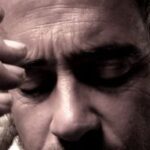Daytime sleepiness is caused due to lack of sleep the night before or due to a sleep disorder known as excessive daytime sleepiness (EDS). EDS can make a person feel drowsy and want to sleep despite getting a full eight hours the night before. Also known as hypersomnia or somnolence, the EDS can cause a person to sleep through situations when they should feel more alert.
EDS should not be confused with narcolepsy. Excessive daytime sleepiness is can be caused by a neurological condition or sleep disorder. EDS is a physical condition, not a neurological one.
What Causes Excessive Daytime Sleepiness
A person who feels sluggish and exhausted because they were up all night with the baby or they only got four hours of sleep does not have EDS. EDS occurs in patients who get plenty of sleep, typically seven to nine hours a night, but continue to feel inexplicably exhausted during the waking hours. The condition of hypersomnia (excessive sleepiness) is linked to physical conditions.
The number of issues that can cause daytime sleepiness or are linked to it include: head trauma, tumors, sleep apnea, narcolepsy, sleeping pill or tranquilizer use, central nervous system injury, withdrawal (caffeine, alcohol, and nicotine), drug abuse and disease. Several different medical conditions and disease correlate with EDS patients including epilepsy, depression and multiple sclerosis. Despite science’s best efforts, some causes of excessive daytime sleepiness are simply not known.
Diagnosing EDS
How does a physician tell if a patient is suffering from EDS or is just plain worn out? The symptoms are similar, but if a physician suspects that daytime sleepiness is more than just lack of sleep, they can and will prescribe a sleep study. Sensors will be placed around the head and body to record vital statistics, brain waves, respiration and muscle activity. If a sleep disorder is causing the hypersomnia, the sleep study will identify it.
Other tests that the sleep center may perform include a multiple sleep latency test and maintenance of wakefulness test. The first examines how quickly a person falls asleep. The average person takes five to ten minutes to go sleep. The patient may be asked to nap several times over the course of a visit to see how quickly they fall asleep during waking hours. This is a good barometer of daytime sleepiness.
The second exam requires the patient to stay awake even if they want to nap. The equipment will monitor your body’s physical response to the sleepiness experienced. In the average person, some mild tiredness can be shaken off quickly, but in EDS patients the daytime sleepiness is much more pervasive.
Symptoms
A person with EDS can struggle with self-esteem and self-confidence issues particularly at home and on the job. They can perceive themselves as lazy or ineffectual, particularly if they are battling constant sleepiness. EDS patients nap frequently despite sleeping eight to nine hours a night. They feel irritated and mildly depressed.
They can struggle with cognitive functioning such as short term memory loss and needing to repeat basic things a few times to prevent forgetting. They can feel unfocused and lack the ability to concentrate on a project or projects without prodding. Discovering that EDS is related to another condition can be a relief of personal pressure to succeed.
Treatment
Unfortunately, the course of treatment for daytime sleepiness is directly linked to what is causing it. If the cause is a sleep disorder, treatment of the sleep disorder can alleviate the symptoms of EDS. If the cause is medicinal, then adjustments to the prescription can help. If the symptoms are linked to withdrawal or drug abuse, then time to cleanse out the system is necessary. Programs provide professional support to help patients cope.
If excessive daytime sleepiness is suspected, then the patient should contact their physician for a consultation and treatment.





